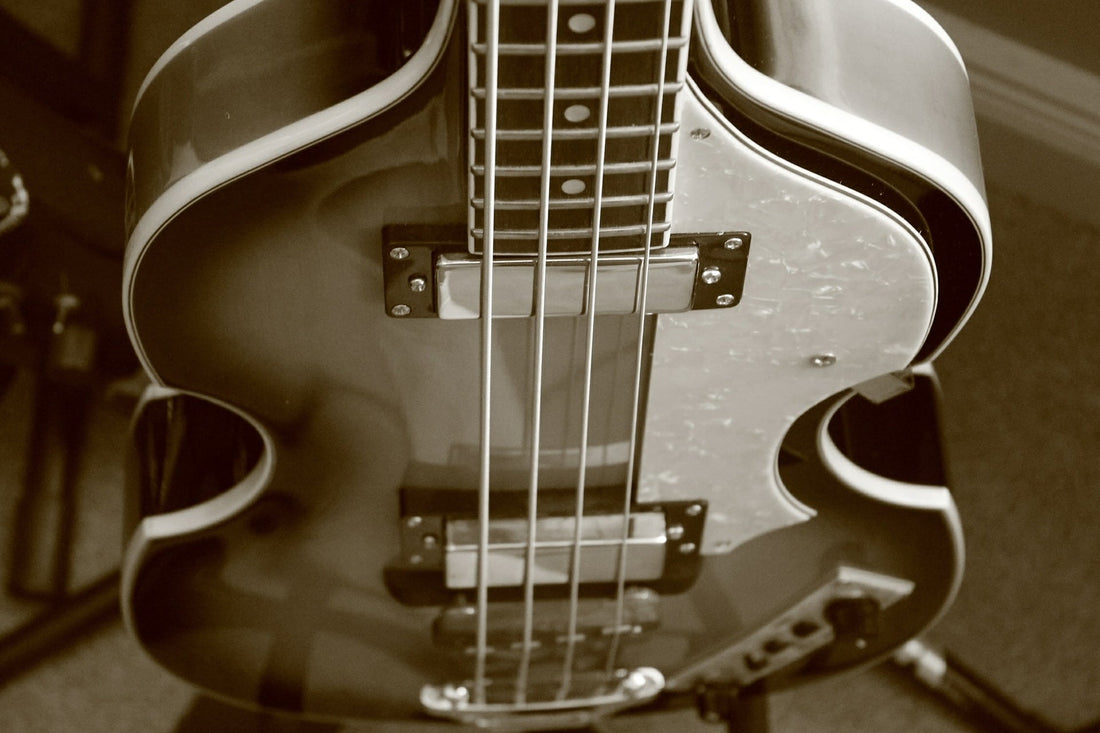In his Issue 108 column Dan Schwartz related that Paul McGowan had proposed a series on why a bass instrument was necessary. Drums keep the beat and guitars and other instruments carry the melody and harmony, so what is the bass for? I don’t want to steal Dan’s musical thunder but I have a few ideas and examples.
First up probably answers the question definitively but I have to get a full column out of this so you’ll have to bear with me. Click the next link and be transported back to 1970.
That sir was Larry Graham, the father of slap bass, on that very necessary bass track. The track defines the song. Graham developed this style playing in his mother’s band as a kid. She couldn’t afford the drummer and had to let him go. She could afford Larry since she didn’t have to pay him. Young Larry had to make up for the loss in the bottom of the band’s sound with a technique using his thumb to pluck the bottom bass foundation notes and popping the high strings to imitate the snare or kick (bass drum). Not technically “slap” bass yet but the slap bass style morphed from this. It would soon be everywhere in funk, disco and R&B.
Next we have a jazz example. On Miles Davis’s classic “So What” from Kind of Blue, bassist Paul Chambers starts with a riff in D Dorian (crap, just heard folks clicking out) joined lightly by drummer Jimmy Cobb on snare and ride cymbal, and pianist Bill Evans (!!!) doing two chords Em7(add 4) and Dm7(add4). When the horns come in they each take one note of those chords and follow the piano. The cool dig on the phrase is it starts with the first 9 bars using just the rhythm section (bass, drums, piano). Then on bar 10 the horns come in playing the triads with Evans, but drop out on bar 16 to leave just bass, drums and piano again. Nice. This pattern follows anytime the hook is played.
The idea shifts to an Eb Dorian bass line and the chords go up a half step to Fm7(add4) and Ebm7(add4).
And that’s it. The whole song. One of the most recognized tracks on one of the most influential albums in music history. Duane Allman once related he’d gotten serious on guitar after playing Kind of Blue a couple of thousand times over one summer.
The crazed part is, Miles wrote all this stuff for the tracks on the album just hours before the band arrived and didn’t present any charts. He just outlined scales and passages using a modal approach and the guys had to swing it. Of course, the “guys” were Bill Evans, Cannonball Adderley, John Coltrane, Paul Chambers and Jimmy Cobb, with pianist Wynton Kelly subbing for Evans on “Freddie Freeloader.” And uh Miles Davis. As far as pure talent, remember there are no frets on that monster Chambers is playing.
Note that when the soloing starts the bass shifts to a walking style and everything swirls around that. No drums or guitars can make a piece swing like that. I’ve heard piano players approach it but even the great Oscar Peterson always had a bassist in his trios.
Also influential were Charles Mingus and Willie Dixon, whose songwriting stood them apart. Then we have the studio cats like James Jamerson with the Motown Funk Brothers and Carol Kaye with the Wrecking Crew out in LA. You would be shocked to know how many hit songs Jamerson and Kaye were instrumental on. For instance, Kaye was in an early session with Sonny and Cher and they showed her the original part for “The Beat Goes On.” She thought it was pretty dull, so she wrote the now famous beginning hook. Major hit.
In the late 1950s and early 1960s Muddy Waters recorded with a few blues trios that along with developments in musical instrument amplifier technology (amplifiers were becoming bigger, louder and more powerful) spawned rock trios of either drums, bass and guitar or drums, bass and keys.
In 1964 Frank Zappa played in a trio, the Muthers, with Paul Woods on bass and Les Papp on drums. In 1966 the prototype for rock power trios called themselves Cream. Suddenly power trios were everywhere. The Jimi Hendrix Experience, Blue Cheer, Grand Funk Railroad and the James Gang with Joe Walsh. Even Led Zeppelin and the Who were essentially power trios with effeminate lead singers.
Yeah I said it.
The trend continued through the 1970s and beyond. Prog rockers like Rush and Triumph. Out of Texas came ZZ Top and Stevie Ray Vaughn and Double Trouble. Emerson, Lake and Palmer, the Goo Goo Dolls, Primus, Nirvana, Motörhead. Green Day, Robin Trower, the Stray Cats, early Genesis, early Bela Fleck and the Flecktones and the Reverend Horton Heat. The list is actually pretty eye-opening and the whole power trio genre cannot be done without the bass guitar.
Oooh. Speaking of the Reverend Jim Heath. The great tradition of double bass in rockabilly presented by Jimbo.
Of course the music industry would buy if it sold but the club managers at the bottom of the food chain were troglodytes. Look it up; it’s a fact. The last band I was in, the Uh-Oh Squad, was a power trio doing New Wave but we couldn’t get work no matter how well we presented the material. The audiences thought we were spot on but club managers kept telling us a trio could never do rock. “You need a second guitarist.” That sent us into dizzying swirls of profanity-laden apoplexy given the mind boggling list of evidence to the contrary. Eventually we had to give in and added a guitar. Luckily Chris “Guitar” Kane was really good.
The Uh-Oh Squad did some great New Wave covers but we especially loved the Police. I was thrilled because the songs were written by the bass player and therefore so much fun to play. Here’s the one that got me the job as vocalist and bassist with the Squad. The band had come to me with different recordings and this one tripped me trig.
I have no idea why Sting was playing a six string instead of a bass through the entire vid. Gotta be a story there. Like a roadie who subsequently disappeared left the bass at the flat, or something like that.
Now for the final word. Jazz fusion brought new styles to bass playing with the likes of Stanley Clarke, Victor Wooten, Michael Manring and Marcus Miller. And you cannot discuss the genre without mentioning the most influential of them all, Jaco Pastorius. His style was mind-blowing and not because of technical prowess or speed. None of us had ever heard a bass played like that before. His approach included melodies reminiscent of synth lines, artificial harmonics (where he would pluck the strings to make them ring out at higher tones than fingered) and strong arm runs that swung. He took the instrument to new levels of playing as a lead instrument and used its percussive capability to crisp advantage.
Here is Jaco live with a song he wrote for his first album with Weather Report.
Now bass players do have a bad rep. The jokes are endless, like:
“What do you call a bass player without a girlfriend?”
“Homeless.”
That one is definitely not true. Since everyone wanted to play guitar there were 100 of those fothermuckers to every one of us. I never had to worry about getting work.
For balance here is a guitarist joke.
“How do you get a guitar player to turn his volume down?”
“Put a chart in front of him.”
OK that one actually is true.
A shout out here to Paul McCartney. The Silver Beatles early on had an art student bassist named Stu Sutcliffe. John, Paul and George shared guitar duties. Sutcliffe quit the band to go back to art school. There was no way George or John would give up the chick magnet guitars (besides they could barely play them…yeah, I said it) so Paul picked up the bass. And props to Paul, and this sometimes gets lost in the light of his songwriting; McCartney became a helluva bass player who created some iconic bass lines throughout the Beatles catalogue.
So Paul McC. I hope I’ve given you something to chew on and shine a light on how crucial the bass is to many genres including jazz, rock, rockabilly, funk, R&B and blues.
Thank you my friend for bringing this topic up. I will get some mileage out of this!
Header image courtesy of Kelly Darwin/Pixabay.



